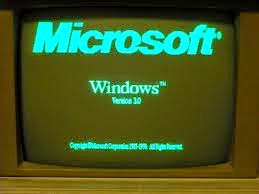Tuesday, January 13, 2015
Understanding of Windows 3.0 most complete
Windows 3.0
Microsoft Windows eventually achieve significant success when stepping on version 3.0 which was released in 1990. In addition to offering upgrades to Windows applications, Windows 3.0 is also able to allow users to run multiple MS-DOS applications simultaneously (multitasking), because it is in this version has introduced virtual memory. This release precisely what makes the IBM PC and compatibles serious challenger to the Apple Macintosh. This is due to the increase processing performance charts at that time (with the graphics card Video Graphics Array (VGA)), and also protected mode / 386 Enhanced mode that allows Windows applications to use more memory in a way which easier compared to what offered by MS-DOS.
Windows 3.0 can run in three modes, namely real mode, standard mode, and 386 Enhanced mode, and is compatible with the Intel family of processors from Intel 8086/8088, 80286, up to 80386 Windows 3.0 will try to detect which mode will used, although the user can force the Windows work in a certain mode using certain switches when running
win / r: force Windows to run in real mode
win / s: force Windows to run in standard mode
win / 3: force Windows to run in 386 Enhanced mode.
Version 3.0 is also the first version of Windows that runs in protected mode, although the 386 enhanced mode is an enhanced version of the kernel of the protected mode kernel in Windows / 386.
Because of the backward compatibility feature, Windows 3.0 application must be compiled using a 16-bit environment, so that did not use the capabilities of the Intel 80386 microprocessor, which is actually a 32-bit processor.
Windows 3.0 also comes in a version of "multimedia", which is called Windows 3.0 with Multimedia Extensions 1.0, which was released a few months subsequently. This release is bundled with the existence of "multimedia upgrade kits", which consists of a CD-ROM drive and a sound card, like Creative Labs Sound Blaster Pro. This release is the pioneer of all the multimedia features present in later versions of Windows, such as Windows 3.1 and Windows for Workgroups, and become part of the Microsoft Multimedia PC specification.
The features mentioned above and support of application software market is growing to make Windows 3.0 is very successful in the market. Noted, in the two years prior to the release version of Windows 3.1, Windows 3.0 sold over 10 million copies. Finally, Windows 3.0 became a major source of income of Microsoft, and Microsoft do the make some revisions to the original plan.
Windows 3.1
In response to the release of the IBM OS / 2 version 2.0 to the market, Microsoft developed Windows 3.1, which offers some minor improvements to Windows 3.0 (as well as the ability to display the Fonts TrueType fonts, which was developed jointly by Apple), and also contained in it a lot of fixes to bugs and support for multimedia. Version 3.1 also removes support for real mode, so it merely runs in protected mode which only the Intel 80286 microprocessor or higher again. Microsoft is finally released Windows 3.11, which is the Windows version 3.1 which includes all the patches and fixes which released after Windows 3.1 was launched in 1992.
Subscribe to:
Post Comments (Atom)

.jpg)


0 comments:
Post a Comment